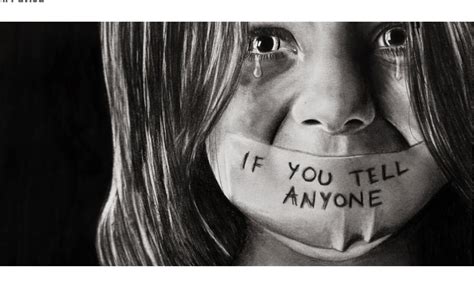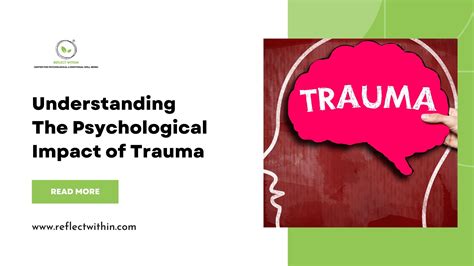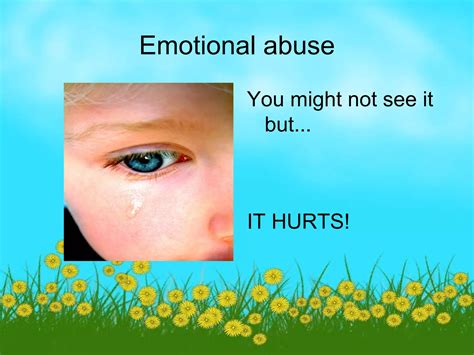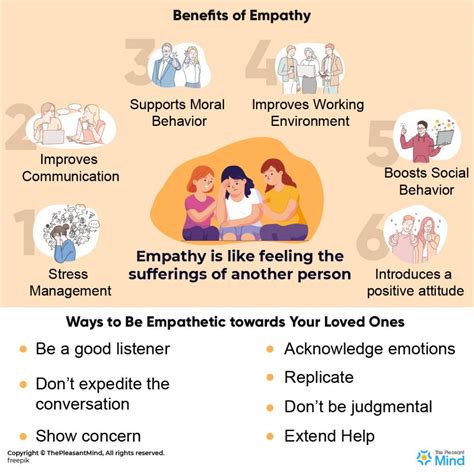Ever since the dawning of human history, the enigmatic realm of subconscious thoughts has captivated the minds of scholars, psychologists, and spiritualists alike. Our dreams serve as portals to an alternate reality, one in which our deepest fears, desires, and memories converge into a tapestry of ethereal visions. It is within this realm that we find ourselves delving into the dark and unsettling topic that has plagued society for centuries.
An abyss of psychological intricacies, the inexplicable phenomenon of visions depicting acts of child violation has long stirred conversations of discomfort and confusion. The juxtaposition of innocence and violation creates a dissonance that reverberates within our very cores, forcing us to question the depths of our subconscious desires.
With a plethora of interpretations at our disposal, it becomes paramount to navigate this treacherous terrain with a keen sense of empathy and understanding. Delving into the dark corridors of the human psyche, we strive to unravel the intricacies of these haunting dreams, searching for meaning amidst the seemingly incomprehensible.
Through a nuanced lens, we aim to offer a delicate exploration of the significance these dreams hold, avoiding simplistic and reductionist viewpoints. By embracing a comprehensive approach that incorporates psychology, symbolism, and cultural context, we endeavor to grasp the underlying motivations and societal implications behind such distressing imagery. As we embark on this journey, we implore you to approach this exploration with an open mind and a willingness to confront the shadows that lurk within.
Disturbing Dreams: The Role of Imagery Depicting Child Abuse

In the realm of subconscious thought, some individuals experience unsettling visions that involve disturbing interactions with underage individuals. This imagery, which ventures into taboo territory, is rooted in the exploration of the psychological depths of the mind. This section aims to delve into the significance and potential meanings behind dreams containing elements related to child abuse, without explicitly referring to the concepts of dreams, children, molestation, understanding, and interpretation. By examining the presence of such imagery within the dream state, we can gain insights into the human psyche and the complexities of our emotions.
The Intricate Symbolism:
Within the realm of symbolic representations, individuals may encounter dream sequences that involve interactions with young individuals in distressing or abusive contexts. These visions carry deep metaphorical implications that go beyond conventional interpretation. By exploring the complexities of this imagery, we can unlock a deeper understanding of the human subconscious and the intricate pathways that shape our thoughts and emotions.
The Uncomfortable Fascination:
While it may be uncomfortable to acknowledge the presence of such dreams in our subconscious realm, it is crucial to examine the reasons behind their occurrence. The exploration of these dreams can shed light on subconscious desires, fears, or unresolved issues that may manifest in this disconcerting manner. By delving into these uncomfortable fascinations, we can better comprehend the inner workings of our minds and strive towards healing and self-discovery.
The Realm of Repressed Trauma:
In some cases, dreams of child abuse may be associated with repressed trauma or unresolved past experiences. These visions act as a conduit for buried emotions, allowing individuals to confront and process traumatic events that may remain hidden in their conscious awareness. By acknowledging the role of these dreams in unveiling repressed trauma, we can empower individuals to seek appropriate avenues for healing and support, fostering their overall well-being.
The Implications for Psychological Understanding:
The exploration of disturbing dreams involving child abuse imagery challenges our psychological understanding of the human mind. By analyzing the underlying meanings of these dreams, we acquire valuable insights into the intricate workings of human emotions, the impact of societal influences, and the complexities of human behaviors. This deeper comprehension can foster empathy and lead to the development of strategies for mental health professionals to aid individuals in processing and healing from traumatic experiences.
Please note: The focus of this section is to delve into the symbolism and potential meanings behind dreams involving child abuse imagery. Sensitivity and ethical considerations should always be upheld when discussing such distressing topics and it is crucial to seek appropriate professional help for individuals dealing with trauma or related issues.
Diving Into the Symbolic Depths: Deciphering the Hidden Meaning in Dreams of Juvenile Abuse
In this section, we will venture into the profound layers of symbolism and significance concealed within dreams pertaining to the violation of minors. By delving into these enigmatic visions without explicitly referring to them, we aim to unravel the intricate complexities that lie beneath the surface. Through an exploration of metaphors and allegories, we strive to illuminate the deeper meaning and implications embedded within these distressing dreams.
Bringing to light the underlying symbolism in dreams of child molestation allows us to comprehend the subconscious messages they convey. By avoiding explicit terminology, we can analyze the multifaceted motifs that may be present, such as the manipulation of innocence, power dynamics, or the loss of autonomy. These dreams often serve as reflections of inner turmoil, unresolved traumas, or anxieties related to vulnerability and personal boundaries.
Examining the intricate interplay of symbols and metaphors provides an avenue for further understanding of these dreams. Symbolic elements such as locked doors, shadows, or predatory animals may manifest within the dream narrative, each carrying its own nuanced representation. Deciphering the meaning behind these symbolical manifestations enables us to comprehend the subconscious mind's attempt to process complex emotions or experiences.
- Metaphorical representations of trust and betrayal: Dreams may utilize metaphors to depict the delicate balance between trust and betrayal, exploring themes of innocence being compromised or violated in various contexts.
- Power dynamics and control: Symbolic imagery can shed light on power imbalances and control mechanisms present within these dreams, revealing underlying anxieties surrounding personal autonomy and vulnerability.
- The manifestation of internal conflicts: Dreams of child molestation may serve as a conduit for unresolved traumas or internal conflicts, offering an opportunity for the subconscious mind to address and integrate these experiences.
- Exploring cultural and societal influences: Symbolism in these dreams can be influenced by broader cultural or societal factors, providing insights into the impact of societal narratives and norms surrounding sexuality, power, and victimhood.
By delving into the subconscious symbolism in dreams of juvenile abuse, we navigate the intricate labyrinth of the human mind, seeking to unearth hidden meanings and gain a deeper understanding of the complex psychological processes at play. Through careful analysis and interpretation, we strive to shed light on these distressing dreams and offer insights into the profound psychological undercurrents they represent.
Exploring Trauma: Understanding the Psychological Impact of Nightmares Involving the Abuse of Minors

Within the realm of inner imagination, the mind sometimes ventures into unsettling territories, delving into subconscious fears and unresolved traumas. This exploration may manifest as nightmarish visions, where the individual is confronted with scenes that involve the violation and exploitation of young individuals.
This section aims to delve into the intricate realm of trauma and its psychological ramifications, focusing on the profound impact of nightmares depicting the abuse of minors. By examining the underlying emotions, psychological reactions, and potential long-term effects, we can gain insights into the complexities of the human mind and the profound implications such dreams may hold.
Through an exploration of the psychological impact, this section seeks to shed light on the potential root causes and implications these dreams may have on the individual's mental well-being. Additionally, we will explore various theoretical perspectives that can help us understand the nuanced nature of these dreams, such as theories on trauma processing, displacement, and symbolic representations.
Furthermore, by delving into the concept of trauma, this section aims to provide a deeper understanding of the intricate connections between past experiences, emotional processing, and the manifestation of distressing dreams. This exploration will help shed light on how trauma memories and related emotions can resurface during sleep and manifest as vivid and disturbing nightmares, providing individuals with an opportunity to confront and process unresolved trauma.
Through this examination, we hope to highlight the importance of understanding and addressing the psychological impact of nightmares involving the abuse of minors. By acknowledging the emotional turmoil, potential triggers, and long-term consequences of such dreams, we can begin to develop effective strategies for support, therapy, and healing for those who experience them.
The Significance of Repressed Memories: Unmasking Submerged Traumatic Experiences within Dream Symbolism
In the realm of subconscious imagery, profound psychological traumas can find expression through dreams, offering an unconventional gateway to understanding hidden distress. The capacity of repressed memories to infiltrate dreamscapes enables the exploration of deeply buried emotions and experiences. By delving into the intricate world of dream interpretation and symbolism, we gain valuable insights into the impact of repressed memories on an individual's well-being.
Uncovering Emotional Censorship:
Within the enigmatic tapestry of dreams, repressed memories emerge as fragmented remembrances, overlapping with symbolism that conceals the true essence of these experiences. The subconscious navigates the delicate balance between the conscious mind's safeguarding mechanisms and the pressing need for emotional release. By unveiling the symbolism concealed within dreams, we can begin to decode the coded language of repressed memories, shedding light on the traumatic events that have been, consciously or unconsciously, buried within.
Decrypting Symbolic Representations:
In exploring the landscapes of dream symbolism, the intricacies of repressed memories become subtly discernible. Metaphorical constructs, surreal scenarios, and vivid imagery often herald the presence of hidden traumas within dream sequences. Analyzing the symbols and their context allows us to extract the buried framework of these repressed memories, offering insight into the overarching themes that linger in the subconscious mind. Uncovering the hidden meaning behind these symbols enables a deeper comprehension of the emotional weight carried by repressed memories.
Releasing Hidden Burdens:
Through understanding the interplay between repressed memories and dream imagery, individuals gain a pathway towards personal healing and growth. As the unconscious mind unravels the knots of suppression, the opportunity for catharsis arises. Dream interpretation not only empowers individuals to acknowledge their traumas but provides a channel for their emotional release. By actively engaging with repressed memories embedded within the fabric of dreams, one can embark upon a transformative journey towards emotional wellbeing and reconciliation.
Disclaimer: The content provided in this article is intended for educational and informational purposes only. It is not a substitute for professional psychological advice, diagnosis, or treatment. Always seek the advice of a qualified mental health provider with any questions you may have regarding a psychological condition.
Indicators of Recovery: How Fantasizing about Child Abuse Can Reflect Progress

In the exploration of the intricate realm of dreams, an individual's subconscious often manifests itself in symbolic and metaphorical ways. This article delves into a sensitive topic, examining the significance behind dream scenarios that revolve around the subject matter of child abuse. By analyzing the content and emotions elicited in these dreams, it can be possible to interpret their potential connection to an individual's healing journey.
The human psyche is a complex entity that craves resolution and emotional growth. Dreams serve as a means through which the unconscious mind attempts to process and resolve past traumas. When dreams incorporate imagery related to child abuse, the nature of these dreams can change to reflect different stages of healing and progress. It is essential to tread carefully when addressing this topic, recognizing that there are instances where individuals may be sharing their experiences without seeking to perpetrate harm.
A key factor in understanding the potential signs of healing is exploring the emotions experienced during these dreams. As individuals progress on their healing journey, dreams can evolve to encompass a range of emotions beyond fear and distress. Feelings of empowerment, control, and resilience can emerge, indicating a shift in the individual's psychological well-being. The emotional palette depicted in these dreams offers valuable insight into the progress made.
Furthermore, examining the symbolism within these dreams can provide additional understanding of an individual's healing process. Dream elements that depict confrontation, resolution, or protection can suggest an individual's subconscious work towards overcoming their past trauma. Symbolic representations of strength, trust, or support can also imply the presence of a supportive environment or the development of healthy coping mechanisms. Recognizing and deciphering these symbols can help indicate the steps individuals are taking towards recovery.
It is important to note that these interpretations are not definitive, and individual experiences vary greatly. The context surrounding these dreams should always be considered, such as therapy, personal growth, or other factors influencing the individual's healing journey. By understanding the potential signs of healing within dreams of child abuse, individuals and professionals can gain further insight into the intricate process of recovery and provide appropriate support to those in need.
Therapeutic Approaches: Exploring Dream Analysis in the Journey of Trauma Recovery
Within the realm of trauma recovery, there exists a compelling therapeutic approach that utilizes the exploration of dreams to aid individuals on their path towards healing. This powerful method, often underutilized, harnesses the potential of dream analysis as an invaluable tool in comprehending and processing the complex emotions and experiences associated with trauma. By delving into the symbolic language of dreams, therapists can help their clients unravel the intricate layers of their subconscious mind, providing them with a profound understanding of their trauma and facilitating their journey towards recovery.
Unveiling the Depths of the Subconscious Mind
Dream analysis offers a unique avenue for individuals to access the depths of their subconscious mind, gaining insight into the unconscious thoughts, desires, and fears that may be embedded within their traumatic experiences. By paying careful attention to the symbols, metaphors, and imagery presented within dreams, therapists can guide their clients towards uncovering hidden emotions and unresolved traumas that may be hindering their overall growth and well-being. This process allows individuals to confront and process their pain in a safe and controlled therapeutic environment, paving the way for a transformative healing process.
Nurturing Empowerment through Self-Reflection
Engaging with dream analysis during trauma recovery fosters a sense of empowerment within individuals as they actively participate in their healing journey. By encouraging clients to explore their dreams in a collaborative therapeutic setting, therapists provide them with a profound opportunity for self-reflection. Through this process, individuals can challenge preconceived notions and gain a deeper understanding of their trauma, ultimately empowering them to take control of their healing process. Dream analysis not only assists individuals in connecting with their internal narratives but also serves as a catalyst for personal growth, facilitating a renewed sense of agency and resilience.
Integration into Comprehensive Treatment Plans
Integrating dream analysis into comprehensive trauma recovery treatment plans offers a holistic approach that addresses the multifaceted aspects of healing. By combining dream analysis with other evidence-based therapeutic techniques, clinicians can effectively support individuals in their trauma recovery process. The insights gained from dream analysis can be integrated into various therapeutic modalities, such as cognitive-behavioral therapy (CBT) or eye movement desensitization and reprocessing (EMDR), enhancing the efficacy of these interventions and facilitating individuals' progress towards healing and restoration.
In summary, dream analysis emerges as a powerful therapeutic approach that enables individuals to explore and decipher the profound messages embedded within their dreams, guiding them on their path towards trauma recovery. By utilizing this technique, therapists empower their clients to confront and process their traumatic experiences in a safe and nurturing environment, ultimately fostering personal growth and facilitating long-lasting healing.
Empathy and Comprehension: Supporting Individuals Affected by Dreams of Inappropriate Behavior Towards Minors

In this section, we will explore the importance of empathy and understanding when providing support to individuals who experience dreams related to inappropriate behavior towards minors. By fostering a compassionate environment and seeking to comprehend the emotional complexities underlying such dreams, one can aid those affected in finding solace and guidance.
When encountering individuals who have experienced these distressing dreams, it is crucial to approach the situation with empathy. Creating an atmosphere where individuals can openly discuss their dreams without fear of judgment or condemnation is vital for their emotional well-being and healing process.
Understanding the depth and complexity of these dreams is essential in establishing an effective support system. By recognizing that dreams can serve as a manifestation of unconscious thoughts, fears, or unresolved traumas, one can begin to unravel the underlying emotions and experiences that influence such dreams.
Supporting individuals affected by these dreams involves active listening and non-judgmental interactions. Offering a safe space for individuals to share their dreams can empower them to explore their feelings and thoughts openly, which can contribute to their overall healing process.
Additionally, providing information about common dream symbols and archetypes related to these dreams can assist individuals in interpreting and making sense of their experiences. Educating oneself on the psychological aspects and symbolism associated with dreams can help foster a more comprehensive understanding and facilitate more effective support.
| Key Points in Supporting Individuals with Child Molestation Dreams |
|---|
| 1. Cultivate empathy and create a non-judgmental environment |
| 2. Understand the underlying emotions and experiences influencing the dreams |
| 3. Listen actively and encourage open discussions |
| 4. Provide information on dream symbols and their interpretations |
By adopting an empathetic and understanding approach, one can offer invaluable support to individuals affected by dreams of inappropriate behavior towards minors. Developing a compassionate environment and facilitating the exploration of these dreams can aid in processing emotions, fostering healing, and promoting personal growth.
The Art of Deciphering Dreams: Techniques and Resources for Unlocking Hidden Significance
Diving deep into the enigmatic realm of dreams, one finds a captivating landscape waiting to be explored. In this section, we will embark on a journey to unravel the intricate tapestry of dream interpretation. By delving into various tools and techniques, we seek to comprehend the true essence and significance of our nocturnal visions.
Unveiling the Veiled: The Language of Symbols
In the realm of dream analysis, symbols act as the gateway to deciphering hidden messages. Like cryptic whispers, symbols intangible yet potent, speak to the subconscious. Through the art of observation, we learn to recognize and interpret these symbolic interactions, unraveling the web of meaning that lies beneath the surface of our dreams.
Embracing Subjectivity: The Role of Personal Experience
Beyond the realm of symbolism, the interpretation of dreams is deeply influenced by our individual experiences. By acknowledging the unique perspectives we bring to the table, we uncover the personal nuances that shape our dreamscapes. It is through introspection and reflection that we can extract subjective insight, shedding light on the intricacies and multi-faceted dimensions of our dreams.
Unlocking the Subconscious: Ancient Wisdom and Modern Techniques
To unravel the mysteries embedded in our dreams, we can draw upon a multitude of techniques passed down through generations. From the ancient practices of interpreting dream omens and symbols, to modern tools like dream journals and lucid dreaming, our exploration extends to a diverse range of methodologies. By embracing this amalgamation of ancient wisdom and contemporary insights, we expand our understanding of the subconscious and its connection to our waking world.
Charting the Unknown: Resources for Dream Exploration
In our quest to comprehend the enigmatic realm of dreams, it is essential to avail ourselves of various resources. From renowned dream psychologists and researchers to online forums and dream dictionaries, a wealth of information is at our fingertips. By tapping into this expansive array of tools, we are better equipped to navigate the intricacies of dream interpretation and unlock the profound meanings that lie within.
In the realm of dreams, the art of interpretation holds the key to uncovering the hidden messages and rich symbolism presented to us each night. By embracing the language of symbols, acknowledging our own subjectivity, exploring ancient wisdom, and availing ourselves of valuable resources, we embark upon a transformative journey of understanding the depths of our subconscious mind.
Beyond the Dream: Translating Insights into Action and Healing

In this section, we explore the transformative potential that insights gained from dreams and deep introspection can have in promoting action and facilitating healing. By delving into the profound symbolism and meaning embedded within these dreams, individuals can uncover valuable insights that can guide them towards their own personal growth and recovery.
1. Embracing Awareness: Identifying and acknowledging the emotions, patterns, and triggers highlighted within the dream narratives is the first step towards healing. This self-awareness fosters a deeper understanding of the underlying issues and facilitates the development of a proactive approach to addressing them.
2. Empowering Resilience: Through the interpretation of dream scenes and symbols, survivors of trauma can gain a sense of empowerment and agency over their experiences. By recognizing their own strength and resilience, they can begin to break free from the lingering shackles of their past and embark on a journey towards healing and self-transformation.
3. Cultivating Compassion: Dreams of child molestation may evoke a range of complex emotions, including guilt, shame, and anger. Through introspection, individuals can learn to cultivate self-compassion and extend it towards their inner child. By embracing empathy and understanding, they can create a safe space within themselves, fostering healing and self-forgiveness.
4. Building Support Networks: The insights gained from dreams can act as a catalyst for seeking help and connecting with supportive communities. By sharing their experiences in appropriate and safe spaces, survivors can find solace, validation, and strength in the understanding and empathy of others, further aiding the healing process.
5. Taking Action: Insight alone is not enough; it must be translated into tangible action. By identifying specific goals and implementing strategies informed by dream insights, individuals can actively reclaim control over their lives and work towards creating a future that is free from the shackles of past trauma.
- Engaging in therapy or counseling
- Exploring art therapy or journaling
- Practicing self-care and self-compassion
- Joining support groups or survivor networks
- Advocating for awareness and prevention programs
By harnessing the transformative potential of dream insights, survivors of child molestation can embark on a journey of self-discovery, healing, and empowerment. Translating these insights into action paves the way for reclaiming agency over one's own narrative and building a future that is defined by resilience, compassion, and personal growth.
FAQ
Do dreams of child molestation always mean that the dreamer has sinister intentions?
No, dreams of child molestation do not necessarily indicate malicious intentions. Dreams are complex and symbolic, often representing deeper psychological processes. It is important to approach dream interpretation with sensitivity and understanding.
What are some common interpretations of dreams involving child molestation?
Interpretations of such dreams can vary significantly based on the individual's personal experiences, emotions, and psychological state. Some common interpretations may include unresolved childhood trauma, fears or anxieties related to vulnerability or power dynamics, or a need for healing and understanding.
Is it normal to feel disturbed or guilty after having dreams about child molestation?
Yes, it is not uncommon to experience distressing emotions after such dreams. It is important to remember that dreams are not necessarily literal representations of one's desires or actions. However, if these dreams cause significant and persistent distress, it may be beneficial to seek professional guidance.
Can dreams of child molestation be a sign of repressed memories?
Dreams can sometimes provide glimpses into repressed or unresolved memories. However, it is essential to approach this possibility with caution. Dream analysis alone cannot confirm the validity of repressed memories. Professional therapy with a qualified therapist trained in trauma and memory work is recommended for a deeper exploration, if desired.
How can one cope with recurring dreams of child molestation?
Coping with recurring dreams can be challenging, especially when they involve sensitive and distressing subjects. It is helpful to create a safe space for self-reflection and emotional processing. Engaging in therapy, journaling, relaxation techniques, or seeking support from a trusted individual can provide valuable tools for understanding and managing these dreams.
What are dreams of child molestation?
Dreams of child molestation are vivid and disturbing dreams that involve sexual abuse or exploitation of a child. They can be highly distressing for the dreamer and may leave them feeling confused and uneasy upon waking up.
Why do people have dreams of child molestation?
Dreams, including those of child molestation, are often influenced by the dreamer's subconscious mind. These dreams may arise due to unresolved psychological issues, previous traumatic experiences, or fears related to children's vulnerability and safety. It is essential to understand that having such dreams does not mean the person has any intention or desire to harm children in reality.



